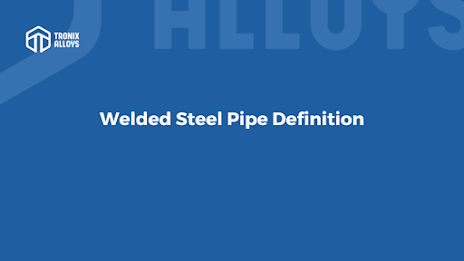Difference Between 316L and 304L Pipes
What is
Stainless Steel?
Iron is one of the softest elements in the universe. Adding up to 2% of carbon to steel, which is now known as steel, gives it incredible strength, hardness, and mechanical properties, all of which are a
result of its carbon content. A lot of people use steel due to the abundance of iron and its easy and cheap availability, as well as the fact that steel is also very flexible. However, steel also has a weak spot, which is found in the iron that is used in steel products. Oxidation, or rusting, is a natural process that occurs to metal over time. As a result of oxidation, rust forms.
A chemical reaction occurs when an element is combined with oxygen, resulting in oxidation and corrosion, which takes place on the surface of the metal when oxygen is combined with all elements innature. The corrosion process forms a very thin layer on the surface of the element, which, once this layer has formed, acts as a protective layer, preventing the material from contact with the air and preventing rust from developing. As a result of this thin layer of protection, the color of the
metal hardly changes as the element of iron does. In contrast, the element is
not the same as this.
The difference in size between the iron and oxygen atoms causes the iron mineral to fail to form a solid bond at its surface, and this coupled with the penetration of rust into the iron element over time means that iron loses all its strength over time, due to the difference in the size of the iron and oxygen atoms. Chromium’s small atoms combine very easily and
rapidly with oxygen because the atoms are so close to each other. As a result of the combination with oxygen, chromium forms a very thin but very strong layer. This layer is not reacted to by any other reaction. Even if it is damaged, the layer reappears in a few weeks. When chromium is added to steel at a certain rate, the same thing happens: the steel will no longer rust.
Stainless steel is obtained by combining more than 10% of chromium with iron
and carbon.
Advantages Of Stainless Steel
The ease of manufacturing majority of stainless steels can be formed with cutting, welding, cold and hot forming, and machining techniques, enabling them to be used in most applications.
Mechanical Strength
The majority of stainless steels are strengthened by cold forming, and thanks to the increase in strength, it is possible to reduce the thickness of the material in designs, thereby reducing the weight and price of the part. It has been shown that heat treatments can provide a material with a high degree of strength in certain species.
Hygienic Feature:
In hospitals, kitchens, food, and pharmaceutical industries, stainless steel material is widely used because of its easy cleaning ability.
For more information visit
https://tronixalloys.com/difference-between-316l-and-304l-pipes/
#differencebetween #316L #304L
#pipes #steelexporter #thesteelexporter #supplier #stockist #manufacturer




Comments
Post a Comment